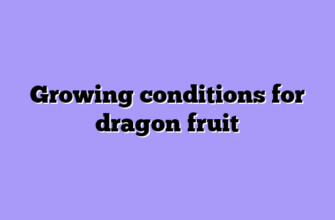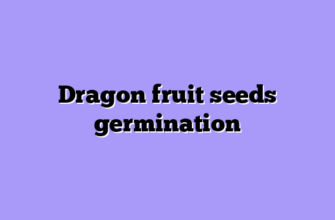At the heart of every flourishing garden lies a unique gem, and today, we are excited to introduce the radiant jewel of our collection, the Asunta 6 Dragon Fruit Variety. This extraordinary fruit has been rapidly gaining popularity, heralding a new dawn in the arena of exotic fruit cultivation.
Description
One glance at the Asunta 6 dragonfruit, and you will be drawn in by its stunning exterior. The fruit’s reddish-green skin, adorned with distinctive, leafy scales, has a certain allure that is both inviting and intriguing. Cutting it open reveals a brilliant pink flesh that’s speckled with tiny black seeds, a sight that adds to the sense of wonder surrounding this remarkable fruit.
The taste of this sort is an absolute sensory delight. The fruit offers a perfect balance of sweetness and tartness, resulting in a taste that’s refreshing and gratifying. Its unique flavor profile seamlessly combines the tanginess of berries with the delicate sweetness of a pear, offering a gastronomic adventure unlike any other.
| Preferred climate: | Tropical, subtropical |
| Sun: | Full to part sun |
| Flesh color: | Light pink |
| Average fruit weight: | ~250 grams |
| Water requirements: | Drought hardy (little watering) |
| Brix: | 16 |
| Time to fruit / flower / harvest: | 2-3 years |
| Preferred soil type: | Perfect drainage (sand / volcanic) |
| Soil pH: | Neutral (6.6-7.3pH) |
| Flavor: | 5 out of 5 |
| Appearance: | 5 out of 5 |
| Production: | 4 out of 5 |
Growing
Cultivating the Asunta 6 Dragon Fruit Variety in your home garden is a fulfilling endeavor. The plant thrives in well-drained soil and a warm climate, making it an ideal choice for those residing in temperate regions. Regular watering and exposure to ample sunlight will ensure that your Asunta 6 plant thrives and produces delicious fruits.

Health benefits
This variety is not just a delight for the palate but also a boon for health enthusiasts. Rich in vitamins C and E, this fruit boosts immunity and promotes healthy skin. The fruit’s high fiber content aids in digestion, while its antioxidants fight off harmful free radicals. Incorporating Asunta 6 into your diet is truly a step towards embracing a healthier lifestyle.
Recipes
To enjoy the Asunta #6 Dragon Fruit, you can consume it raw, or incorporate it into a variety of dishes. The fruit’s unique flavor profile makes it a versatile ingredient, perfect for salads, smoothies, and desserts. For a simple and delicious recipe, you can create an dragon fruit salad by pairing the fruit with some feta cheese, rocket leaves, and a drizzle of honey.
The Alluring Asunta 6: A Dragon Fruit Worth the Fire
Let me tell you, farming ain’t for the faint of heart. It’s a constant dance with Mother Nature, a gamble on sunshine and rain. But when you get it right, well, there’s nothin’ quite like watchin’ your hard work transform into somethin’ beautiful and delicious. That’s exactly what happened with the Asunta 6 dragon fruit. This ain’t your average grocery store special. This fiery little number is a game-changer.
Now, I’ve been wrestlin’ with dragon fruit for years. Tried my hand at the usual suspects – the white-fleshed Hylocereus and the magenta-fleshed ones. They’re good, sure, but somethin’ was missin’. Then, a fellow farmer buddy down in Ecuador mentioned this whisper of a variety – the Asunta 6. He described it with a twinkle in his eye, talkin’ about its “reddish-green scales” and “flesh the color of a flamingo’s heart.” Intrigued? You bet I was.

But the real magic happened with the fruit itself. Now, dragon fruit skin can be all sorts of shades – red, yellow, even purple. But the Asunta 6? It was like a chameleon caught between fire and forest. The base color was a greenish-red, with scales that shimmered a deeper red in the sunlight. It looked like something straight outta a fairytale, a dragon egg waiting to hatch.
The first time I cut one open, I knew I was onto somethin’ special. The flesh wasn’t your typical white or magenta. It was a vibrant pink, like a sunrise caught in a jelly jar. The texture was different too – firmer, with a satisfying crunch that gave way to a burst of juicy sweetness. The flavor? Think of a party in your mouth – a tango of berries and grapes, with a hint of floral perfume from the night-blooming flowers. It was unlike any dragon fruit I’d ever tasted.
Now, this beauty ain’t all sunshine and rainbows. It’s a bit pickier than your average dragon fruit. It needs a little more warmth and humidity to thrive, like a vacation on a tropical beach. But trust me, the extra TLC is worth it. Here’s the thing: the Asunta 6 rewards you for your effort. It produces more fruit per vine compared to other varieties, and those fruits are consistently larger and juicier. It’s like a dragon with a generous heart, sharing its bounty with the farmer who cares for it.
This fiery little number has become the star of my farm. It’s a conversation starter at farmers’ markets, with folks drawn in by its unique appearance and then hooked by its incredible flavor. I even use it in my own kitchen now, turning it into smoothies, salsas, and even dragon fruit ice cream (tastes like a dream, trust me!).
So, if you’re lookin’ for a dragon fruit that’s more than just pretty, that’ll challenge you a bit and reward you tenfold, then the Asunta 6 is your fiery friend. Just be warned, once you try it, there’s no goin’ back to the ordinary. You’ll be hooked on the taste of adventure.
Conclusion
The Asunta no. 6 Variety is more than just a fascinating plant; it is a symbol of innovation and resilience in horticulture. We believe that the Asunta 6 will play a significant role in shaping the future of exotic fruit cultivation, pushing the boundaries of what’s possible in our gardens and our diets.








